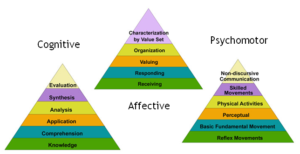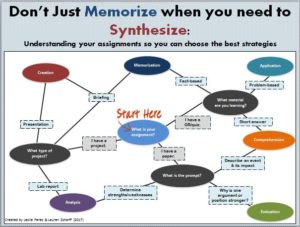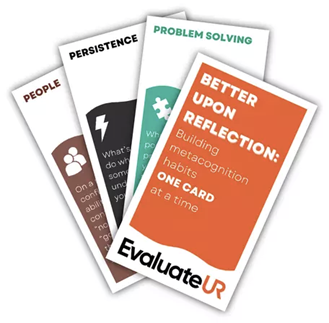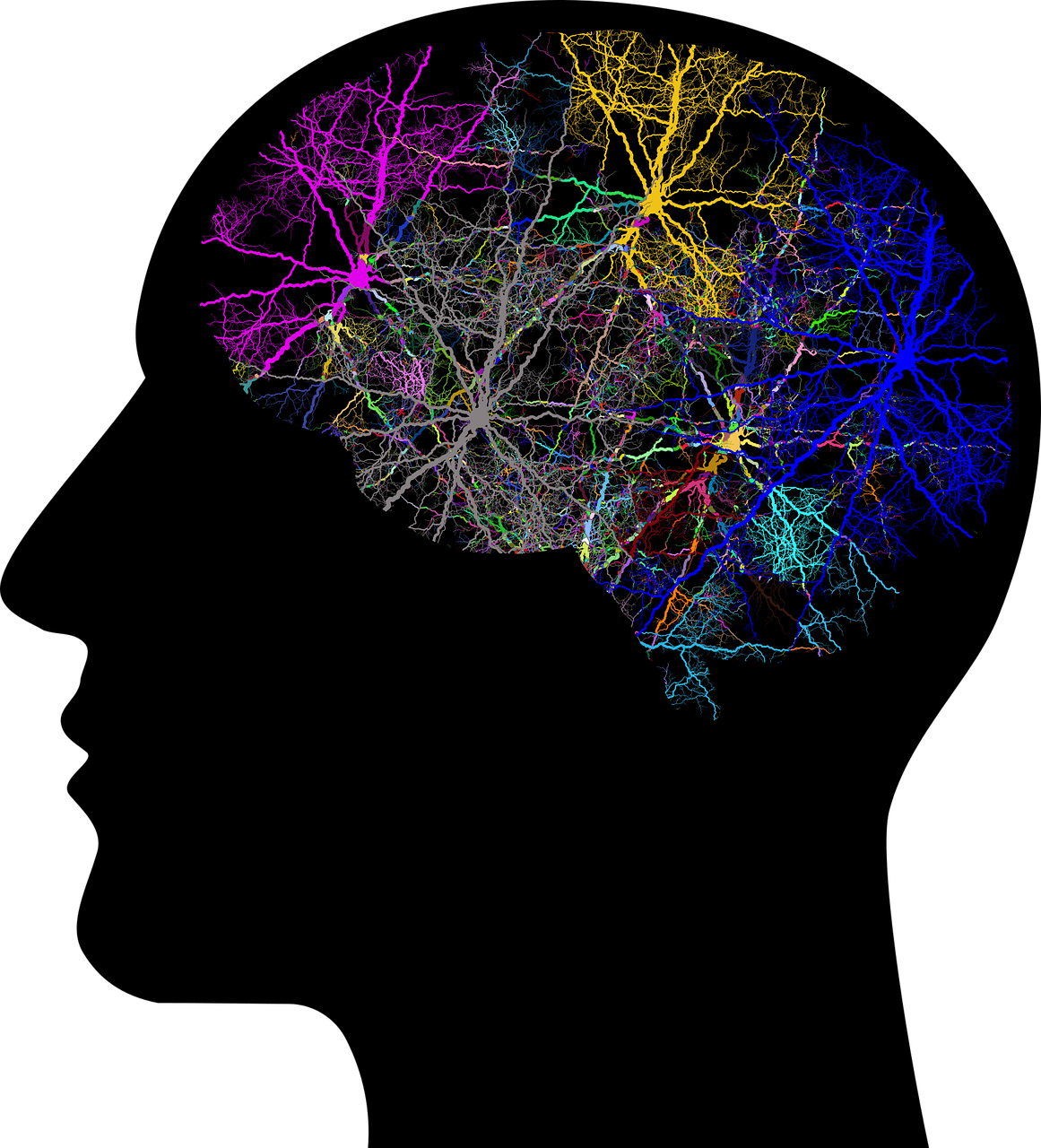By Lauren Scharff, Ph.D., U. S. Air Force Academy *
Across the past year or so I have been reminded several times of the following fact: Most students are not aware of Bloom’s Taxonomy, and even if they are aware, they have no clue how or why their awareness of it might benefit them and their learning. Most instructors have heard of at least one version of Bloom’s Taxonomy, and some keep it in mind when designing learning activities and assessments. But, rarely do instructors even mention it to their students.
Why don’t instructors share Bloom’s Taxonomy with their students? Is it a top secret, for instructors only? No! In fact, awareness and use of Bloom’s taxonomy can support metacognitive learning, so students should be let in on the “secret.”
What were the key experiences that led me to this strong stance? Let me share….
In May of 2016, I was fortunate to attend a keynote by Dr. Saundra McGuire at High Point University. In her keynote address and in her book, Teach Students How to Learn (2015), McGuire shared stories of interactions with students as they became aware of Bloom’s Taxonomy and applied it to their learning. She also shared data showing how this coupled with a variety of other metacognitive strategies lead to large increases in student academic success. Her work served as the first “ah ha” moment for me, and I realized that I needed to start more explicitly discussing Bloom’s Taxonomy with my students.
An additional way to highlight Bloom’s Taxonomy and support student metacognitive learning was shared this past October (2017) when Dr. Karl Wirth led a workshop as part of our 9th Annual Scholarship of Teaching and Learning (SoTL) Forum at the U. S. Air Force Academy. In his workshop he shared examples of knowledge surveys along with data supporting their use as a powerful learning tool. Knowledge surveys are collections of questions that support student self-assessment of their knowledge, understanding, and skills. When answering the questions, students rate themselves on their ability to answer the question (similar to a confidence rating) rather than fully answering the question. Research shows that most students are able to accurately self-assess (confidence ratings correlate strongly with actual performance; Nuhfer, Fleisher, Cogan, & Gaze, 2017). However, most students do not take the time to carefully self-assess their knowledge and abilities without formal guidance and encouragement to do so. In order to be effective, knowledge surveys need to ask targeted / granular questions rather than global questions. Importantly, knowledge survey questions can span the full range of Bloom’s Taxonomy, and Dr. Wirth incorporates best practices by taking the time to explain Bloom’s Taxonomy to his students and explicitly share how his knowledge survey questions target different levels.
Sharing Bloom’s Taxonomy in our classes is a great first step, but ultimately, we hope that students use the taxonomy on their own, applying it to assignments across all their courses. However, just telling them about the taxonomy or explaining how aspects of our course tap into different levels of the taxonomy may not be enough to support their use of the taxonomy beyond our classrooms. In response to this need, and as part of an ongoing Scholarship of Teaching and Learning (SoTL) project at my institution, one of my student co-investigators (Leslie Perez, graduated May 2017), created a workshop handout that walks students through a series of questions that help them apply Bloom’s as a guide for their learning and academic efforts. This handout was also printed in a larger, poster format and is now displayed in the student dorms and the library. Students use the handout by starting in the middle and asking themselves questions about their assignments. Based on their answers, the walk through a path that helps them determine what level of Bloom’s Taxonomy they likely need to target for that assignment. It should help them become more explicitly aware of the learning expectations for their various assignments and support their informed selection of learning strategies, i.e. help them engage in metacognitive learning.
Figure 1. Snapshot of the handout we use to guide students in applying Bloom’s Taxonomy to their learning. (full-sized version here)
As someone who is a strong proponent of metacognitive learning, I have become increasingly convinced that instructors should more often and more explicitly share this taxonomy, and perhaps even more importantly, share how it can be applied by students to raise their awareness of learning expectations for different assignments and guide their choice of learning strategies. I hope this post motivates instructors to share Bloom’s Taxonomy (and other science of learning information) with their students. Feel welcome to use the handout we created.
————
McGuire, S. (2015). Teach Students How to Learn. Stylus Publishing, LLC, Sterling, VA.
Nuhfer, E., Fleisher, S., Cogan, C., Wirth, K., & Gaze, E. (2017). How random noise and a graphical convention subverted behavioral scientists’explanations of self-assessment data: Numeracy underlies better alternatives. Numeracy, 10(1), Article 4. DOI: http://dx.doi.org/10.5038/1936-4660.10.1.4
* Disclaimer: The views expressed in this document are those of the author and do not reflect the official policy or position of the U. S. Air Force, Department of Defense, or the U. S. Govt.





